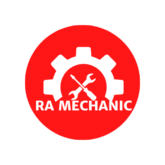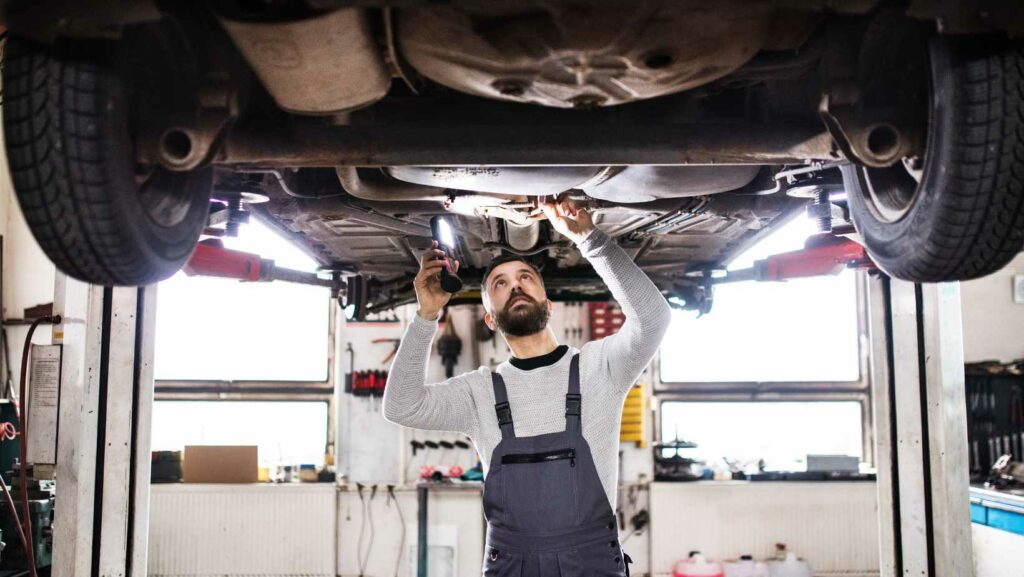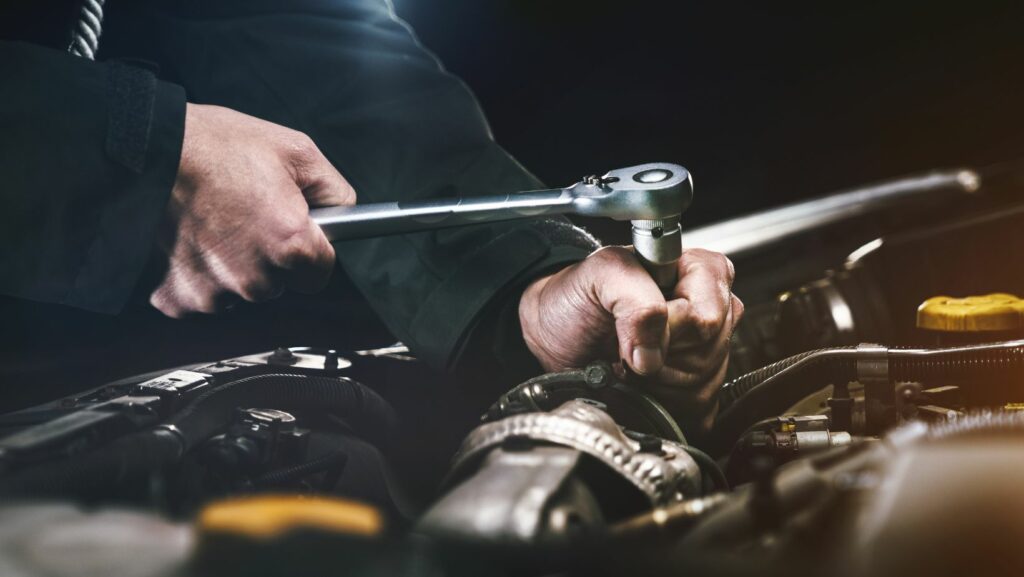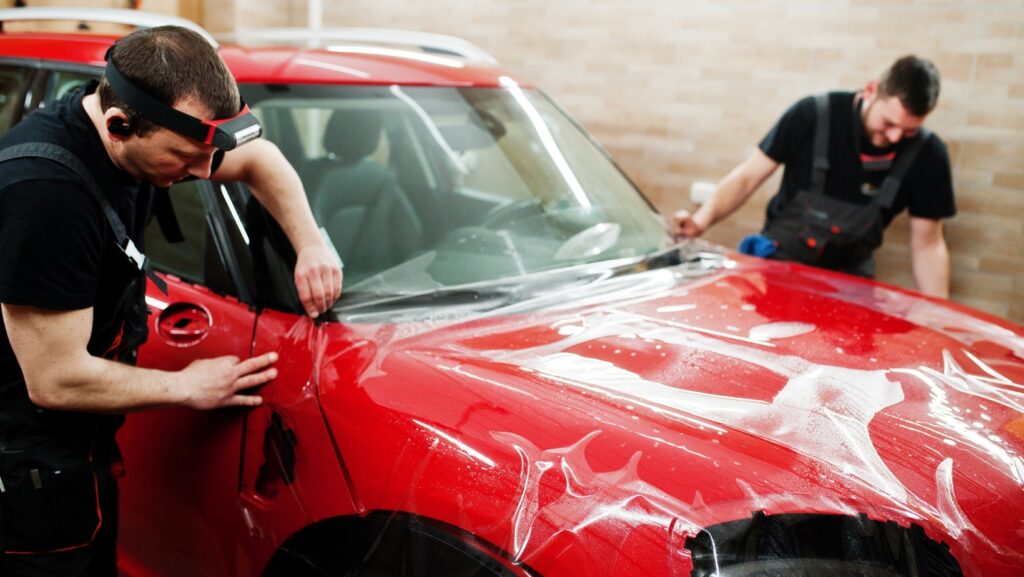
Want to stay ahead of future developments in the collision repair sector?
The auto body repair industry is undergoing rapid transformation at an unprecedented rate. Technology is thoroughly reshaping the collision repair field through advanced diagnostic tools and specialized EV repair methods.
Here’s the thing though…
The alterations in collision repair extend beyond repair facilities to affect car owners and insurers while also influencing original vehicle design processes.
What’s In This Guide:
- How Technology is Transforming Collision Repair
- The Rise of Electric Vehicle Repairs
- Industry Consolidation and What It Means
- New Materials and Repair Techniques
- The Environmental Evolution of Auto Body Repair
How Technology is Transforming Collision Repair
Technological advancements have transformed the diagnosis and execution of collision repair processes.
Think about it:
Visual inspection was the primary method for creating repair estimates until just a few years ago. Advanced scanning tools in modern collision repair detect damage beyond human visual capabilities to enable more precise and detailed repair work.
Digital inspection systems enable technicians to detect structural issues that remain hidden and could endanger vehicle safety when ignored. And that’s just the beginning.
Millimeter-precise measurements from 3D measuring systems have revolutionized structural repairs through exact frame restoration to factory specifications. The technology enhances repair quality by creating safer and more dependable outcomes.
But here’s what’s really interesting…
Today, AI and machine learning technologies have arrived to assist in projecting repair times and costs. Advanced body shops utilize AI-powered tools to analyze damaged photos, which produce estimates in minutes, resulting in 27% more accurate assessments and 31% fewer supplemental charges.
The best auto body repair services now include virtual reality simulations that allow technicians to practice complex repairs before working on actual vehicles. The system delivers superior repair quality while minimizing the likelihood of error when working on luxury or specialized vehicles.
The Rise of Electric Vehicle Repairs
Electric vehicles have moved beyond niche status to mainstream adoption, which has transformed collision repair requirements dramatically.
Electric vehicle repair processes diverge fundamentally from conventional vehicle repair methods.

The automotive collision repair market in the U.S. reached a value of $33.79 billion in 2023, and industry experts predict it will expand to $42.14 billion by 2031 at a compound annual growth rate of 2.8%, according to Data Bridge Market Research. The special requirements of electric vehicles are driving a substantial amount of this market expansion.
Traditional collision repair technicians face new challenges when repairing electric vehicles.
- Technicians need to follow strict high-voltage safety procedures when repairing damaged electric vehicle battery systems.
- Specialized tools and equipment for EV repairs
- Different structural components and materials
- Advanced diagnostic tools are necessary to deal with the complex electronic systems found in modern vehicles.
Many repair shops lack the necessary tools and training to handle electric vehicle repairs. Repair technicians who complete EV repair training programs obtain substantial competitive benefits in the marketplace.
EV repair work requires technicians to obtain specific certifications that demonstrate their knowledge of both mechanical and electrical systems. The widespread adoption of EVs on public roads makes specialized knowledge imperative for industry professionals.
Industry Consolidation and What It Means
The collision repair industry faces rapid consolidation, which many people fail to fully understand.
Industry sources reported that 2024 experienced increased shop closures and mergers during which large operators took over smaller businesses. The competitive landscape is undergoing fundamental changes because of this trend.
Here’s why this matters:
Consolidation is creating both challenges and opportunities. Independent shops face increasing challenges as large chains use their superior resources for equipment and marketing to gain a competitive advantage. Specialized businesses targeting niche markets such as luxury vehicle repair and classic car restoration have successfully discovered methods to prosper.
The industry displayed growth in July 2024, with total employment rising by 3.2% year-over-year and production positions increasing by 4.2% despite ongoing consolidation.
Customers will receive standardized quality with improved technology through consolidation but will face reduced local choices and personalized attention. The market will probably see large operators gain control of more than 50% by the year 2030.
New Materials and Repair Techniques
Today’s vehicles that leave assembly lines show little resemblance to models from a decade past once you examine the components beneath their surfaces.
Modern vehicles increasingly use advanced materials like:
- High-strength steel
- Aluminum
- Carbon fiber
- Composite materials
- Multi-material construction
Automotive manufacturers have created materials that weigh less and provide greater safety strength, which now require new repair methods for vehicle collisions.
Collision repair of high-strength steel involves full replacement because straightening is not an option, while aluminum panels require both specialized tools and training to avoid galvanic corrosion.

Advanced vehicles require complex parts that drive the global spare parts market towards a projected $173.2 billion by 2030, supported by a 4.2% CAGR.
Continuous education and training have become a requirement due to the changes in materials. Collision repair now requires expertise in material science and structural engineering, along with knowledge of specific repair procedures from manufacturers instead of simple dent removal.
The Environmental Evolution of Auto Body Repair
The auto body repair industry is evolving through environmental changes that may seem unexpected.
The global collision repair market is expected to grow from $200.1 billion in 2023 to $261.3 billion by 2030 with a CAGR of 3.9%. Industry-wide adoption of eco-friendly practices serves as a major factor propelling market expansion.
The shift toward sustainability includes:
- Water-based paints replacing solvent-based options
- Advanced filtration systems to reduce airborne particles
- Energy-efficient equipment and lighting
- Parts recycling and refurbishment programs
- Waste reduction initiatives
Environmentally responsible practices offer benefits to businesses and the planet, which attracts consumers who choose shops that demonstrate commitment to environmental stewardship.
The year 2024 saw industry revenues decrease while repair complexity grew, which led to faster adoption of recycled parts that both cut costs and lessen environmental harm. Progressive shops are now adding solar panels and rainwater collection systems to their facilities.
Wrapping It All Up
Let’s Put It All Together
Technological innovation, along with industry consolidation together with new vehicle materials and environmental awareness, will define the future of collision auto body repair services.
Repair shops maintain a competitive edge by investing in employee training programs and modern vehicle equipment while developing EV repair skills and adopting sustainable business practices.
Consumers now benefit from safer repairs that better restore vehicles to their original state but must pay additional fees for newer advanced models.
Vehicle owners, insurance providers, and industry professionals can better navigate the changing collision repair landscape by keeping up with current trends.
Simple hammer-and-dolly repair methods are now obsolete. We now operate within a highly advanced technology-based industry that grows at the same rapid pace as the vehicles it maintains.




